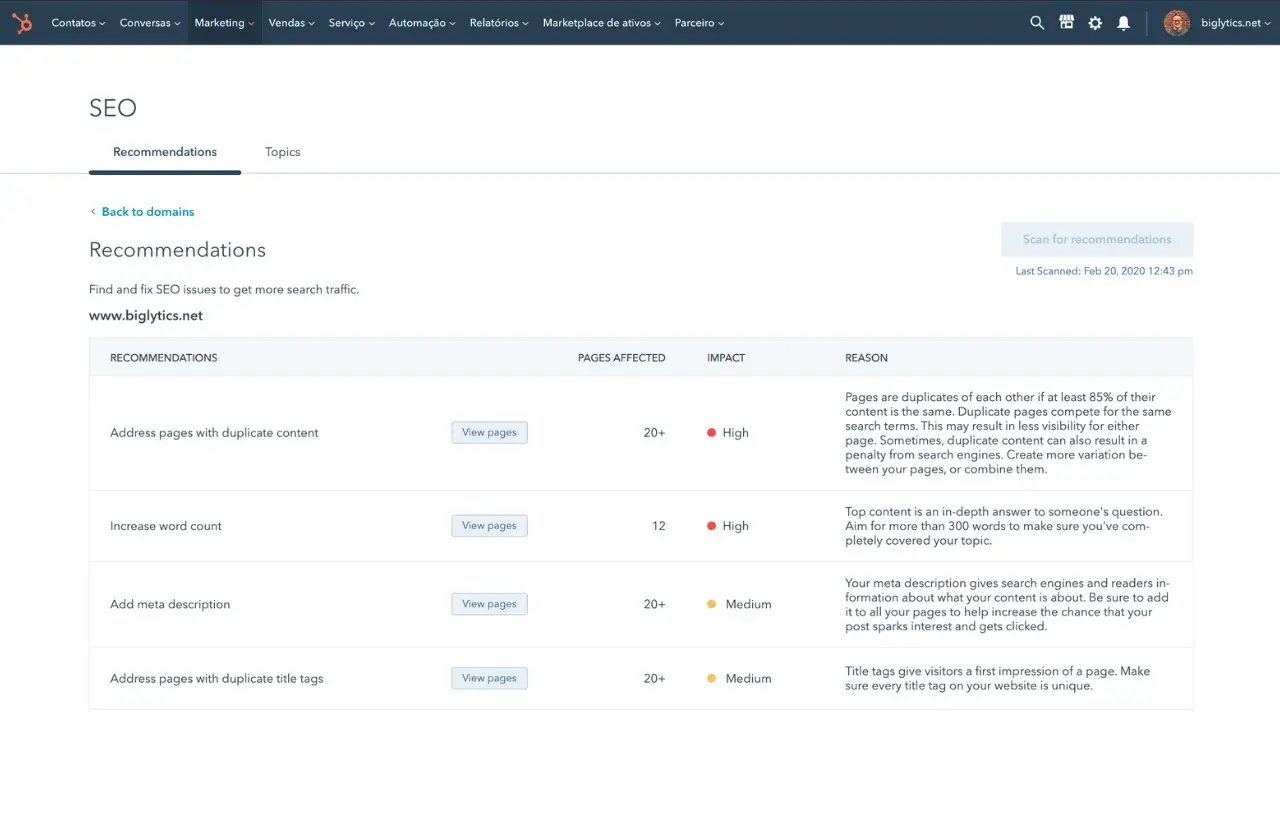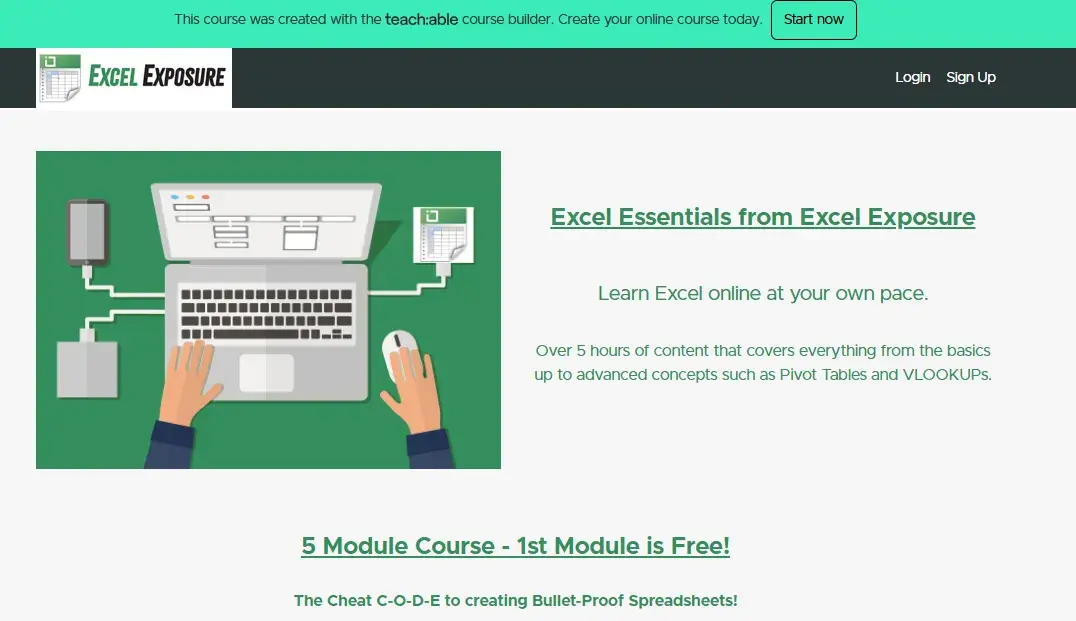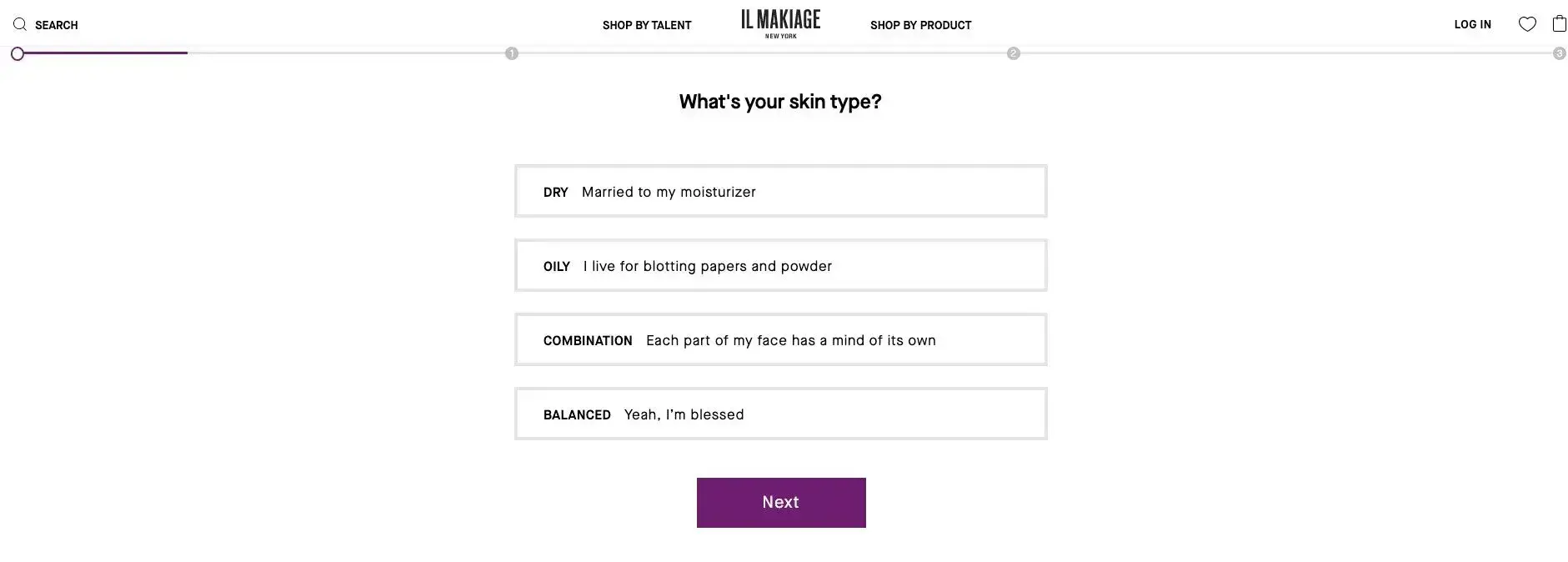Over the past three years, I’ve written over 200 marketing content pieces from blog posts to guides to landing pages. Over that time, I’ve witnessed more and more brands investing not just in new content, but in content optimization.
It makes sense why content marketing teams are optimizing their content.
Brands that produce hundreds of pieces of content each year suddenly find themselves with a library of thousands of outdated blog posts that erode brand trust and drag down their SEO.
Your content is an asset that you need to protect and invest in to continue reaping the benefits.
To refresh your content, follow this step-by-step guide to content optimization. I’ve compiled my knowledge from years of optimizing content as a writer and strategist to start you down the road to success.
Table of Contents
What is content optimization?
Content optimization is the act of updating and improving a piece of marketing content to reach content goals like search rankings, engagement, and conversions.
There are several reasons why you should optimize your content.
First, your content may have missed expectations and isn’t performing as you hoped. You can correct for this by optimizing it for new keywords or changing algorithm preferences, like E-E-A-T.
Another reason is that your content has outdated pricing, links, or screenshots of products that hurt your credibility, rankings, and conversions like signups.
How often should you update content?
There’s no hard-and-fast rule for how often to update content. Some content needs to be updated at least once a year, like a blog post on “Top small business apps in 2024.” Others stay evergreen and relevant for longer.
By our own analysis at HubSpot, we found a drop in performance for content more than 571 days old. If your content is approaching two years old, it’s time for an update.
Benefits of Content Optimization
Optimizing your content is an involved process, sometimes taking as long as writing the original content. So, why bother?
When properly optimized, I’ve seen content outperform the original content and reach new audiences. Here’s how.
1. Better SEO and Discoverability
If your older content isn’t drawing traffic, it’s not worth much to you. Content optimization can rescue lagging rankings and boost your visibility in search engines and AI programs like ChatGPT and Perplexity.
When HubSpot began optimizing old content, the brand grew organic views on those posts by an average of 106%.
The higher your content ranks, the more likely you are to gain high-intent traffic— that’s marketing speak for reaching prospects who are looking for your product or service.
2. Better Engagement
The more updated and relevant your content is, the more credible and useful it will be to the reader. In turn, this creates better brand engagement.
If I run into more than one broken link or outdated reference while searching online, I’m likely to go back to the drawing board.
But when I find a good resource that speaks to my problem, I’ll read til the end, click on related content, and even sign up for that brand’s newsletter.
3. More Conversions
The more people discover and engage with your content, the more likely they are to convert by signing up for an email list or demo or making a purchase.
We at HubSpot found that optimizing content more than doubled the monthly leads from older posts.
Excellent content can aid the sales process at every stage. You can also improve the chance of conversions by adding new calls to action (CTAs) that relate to your current offers and promotions.
Challenges of Content Optimization
Of course, content optimization isn’t without its challenges. Here are the top two risks when you optimize your content.
1. Maintaining a Consistent Voice
When you add new keywords or sections, particularly from a different writer from the original content, you risk losing cohesion. Careless updates can result in an article that doesn’t flow well or seems stuffed with keywords, hurting the quality.
2. Risk of Dropped Rankings
Any time you edit already-published content, you run the risk of dropping in rankings as search engines re-analyze your content.
If a piece of content is a top traffic driver for you, proceed with caution.
Figure out which keywords you want to protect and keep those keywords in headers and body copy. Consider what you can add rather than replace in your content, like new examples and sections.
How to Optimize Content
Now, let’s get to the good part — optimizing content.
Before I start, I’ve learned that there are two halves to content optimization: process and tactics. The steps I will go into here are tactics, but it’s equally important to build a structure and repeatable process for optimization.
First, assemble your team. On a small content team, a marketing manager may complete every step in this process. Others may use a team of two to five contributors.
Possible roles include a content manager to create briefs, a writer, an editor, a graphic designer, and a digital content manager.
I also recommend that you create a content optimization checklist to cover every step in the process and can easily delegate optimization steps to freelancers or team members. This has saved me many times from forgetting an important step!
1. Assess your content and goals.
First, assess the content you want to improve and determine an objective for the update. Is your goal to increase search rankings and traffic? Or is it to drive more conversions? Your approach could be very different depending on the objective.
Then, look at the content itself. What are its strengths and weaknesses? Highlight any sections with obvious outdated information, data, or images.
2. Conduct keyword research.
If SEO strategy is your objective, then keyword research is a crucial step in the process. At this stage, I like to use a keyword research tool like Google Ads, Ahrefs, or Moz to see which keywords the content is already ranking for.
Then I can look for related keywords that people may also search for.
Ahref’s “parent topic” feature is useful to see different keywords in relation to one another, along with Google’s People Also Ask (PAA) tool to gather ideas. Identify a primary keyword and secondary keywords that you want to rank for.
3. Analyze competitor content.
Next, I run a Google search to identify the top five search engine page results (SERPs).
A competitor search is helpful for two reasons.
First, to find out what is already working. Is Google rewarding content with lots of images or examples, for instance?
Second, this is helpful to uncover what gaps there are in the SERPs. Are all the top-ranking articles talking about the same three things but forgetting to mention something equally important?
I also look for ways I can differentiate my content to make it stand out.
4. Create a content optimization brief.
With all the information gathered in steps one through three, I can create a content optimization brief. This is particularly useful when handing the optimization off to a second person, like a freelance writer.
Even if you’re a one-person team, this can help to organize your thoughts and strategy. Here’s what to include in a content optimization brief:
- A link to the current content and copy in Google Docs if possible
- Description of the target audience and their search intent
- Primary and secondary keywords to include
- General update instructions, like checking for broken links and outdated research (e.g., Remove any references to the COVID-19 pandemic in content.)
- Specific instructions about this piece of content (e.g., Add a new H2 section at the bottom with five examples of influencer marketing campaigns.)
- Project details like the deadline and how to deliver the updated draft
5. Prepare your draft.
At this stage, I get my document ready for rewriting. After years of working in Word, I switched to Google Docs for the collaborative editing ease. I may already have the content draft in Google Docs but if I don’t, there’s a hack.
I can get ready to work by saving the web page as an HTML file, then right-clicking on the file and opening it in Microsoft Word. From there, I can copy/paste the text into Google Docs and delete any extra formatting I don’t need.
Next, I’ll adjust the outline to include any major changes requested, for example, removing or adding H2 or H3 sections. Any new sections can stay blank for now as long as I can see the outline.
6. Update links and research.
Now that my strategy and outline are set, I can start digging into the draft. I always start with the lowest-hanging fruit— checking for broken links and replacing them with working ones.
If I cite research, I want to include the most recent research available. That often means checking for more recent reports or removing dated research.
Fact-checking is an important piece of content updates too. I review software and often find in my updates that the pricing or feature lists have changed.
In some cases, the product has been rebranded or the company has gone out of business entirely since the original post.
7. Use a content optimization tool.
While I can optimize content with only the instructions in the brief, content optimization tools make the process more robust and efficient. Three tools that I recommend for content optimization are HubSpot, Clearscope, and Dashword.
In Clearscope and Dashword, you enter your primary keyword and search intent and copy/paste the original draft into the program. The tools give you an A-F grade that you can then try to improve.
In Clearscope, you can view the top SERP outlines and common PAA questions to see what you might be missing. Then both give you a readability grade and a sidebar with a list of keywords found in the top SERPs.
The more you add and the lower your readability score, the better your score becomes.

These tools have basically gamified content optimization. Hitting that A+ or A++ score is incredibly satisfying!

HubSpot’s SEO marketing software has the benefit of integrating the optimization tool into your CMS so you already have the content and data at your fingertips and can edit it from one platform.
With the tool, you run an SEO analysis of your entire site, explore keywords and topical coverage for your content, and monitor your performance.

Beyond providing keywords and recommendations, several of these platforms like HubSpot and Surfer SEO have added content optimization AI tools to write or rewrite content for you.
These can save you time but if you use them, make sure to still edit the content to keep it differentiated and on-brand.
8. Write on-page content.
At this stage, I write new sections and rewrite content sections that need to be reworked. If I didn’t write the original content, I aim to match the voice and style of the original author.
I may rewrite headings and body copy with the primary and secondary keywords.
9. Optimize your off-page SEO with title tags and a meta description.
While you’re rewriting your on-page content, go ahead and optimize your off-page content like title tags and meta description.
Make sure your primary keyword appears in not just your headline but title tag and meta description. Rewriting the meta description can give a better teaser to give people a hook to draw them in and an idea of what to expect in the article.
An off-page SEO checklist is helpful to give content optimization specialists reminders and guidelines to optimize metadata.
9. Optimize for E-E-A-T.
Optimizing for E-E-A-T is another way you can improve your content.
E-E-A-T stands for Experience, Expertise, Authority, and Trustworthiness and is Google’s framework for helpful, reliable, people-first content.
Essentially, you can build credibility with your readers by adding expert perspectives and first-hand experience.
While Google doesn’t officially list this as a ranking factor, many brands (including us at HubSpot!) have seen improved search rankings.
In one HubSpot test, we found that E-E-A-T-ifying content significantly boosted clicks, signups, and conversions. Here are some tried-and-true ways to adapt your content with expertise and authority:
- Share anecdotes and insights from your personal experience on a topic
- Review software or products personally so you can share your experience
- Interview subject matter experts to include expert quotes and insights on the topic
10. Add images, videos, and alt text.
One brilliant (and underused) tactic for content optimization is optimizing for image search. When someone searches on Google, they see images and video snippets between and around the top-ranked articles.
Others go directly to Google Images to search for information. I’ve found that images and video improve my content’s quality by visualizing information.

I recommend breaking up lengthy text with interspersed images and relevant embedded videos.
Try images like photos, illustrations, and infographics to engage readers. Videos are also a great way to drive engagement, especially if you have an active YouTube strategy.
For best SEO results, add relevant alt text that describes the image for accessibility and includes the primary keyword.
11. Optimize for conversions.
One of my favorite ways to optimize content is to add or update CTAs to encourage action. I love writing a compelling CTA that touches on a reader’s challenges and ties together solutions.
CTAs don’t just belong at the end of a blog post or landing page. Add one CTA “above the fold” on a web page or article, one at the end, and even another in the middle for long content.
12. Edit, publish, and distribute your optimized content.
Once your draft is ready, it’s go time.
Hire a professional editor for structural edits and proofreading to make sure your content still flows and meets your brand guidelines. Then update the content in your CMS and add any new links and images.
Not every marketer uses a distribution strategy for updated content, but I recommend distributing it through social media, newsletters, and more as you would with new content. You can use Content Remix to repurpose your blog content across marketing channels.
Once it’s published, keep an eye on the page analytics so you can watch the magic happen— and improve your optimization strategy over time.
Grow Your Traffic, Engagement, and Conversions with Content Optimization
Through my time as a writer and content marketer, I’ve found that content is a living, breathing thing. It shouldn’t be published, then left to slowly decay. It’s most valuable to brands when it’s updated, expanded, and improved over time.
Just as SEO recommendations change, you can teach yourself a new skill by learning to optimize content and adopt content best practices. Simply create a strategy and repeatable process, find the right tool, and start optimizing!
![]()


![Download Now: The Annual State of Artificial Intelligence in 2024 [Free Report]](https://i4lead.com/wp-content/uploads/2024/12/b72f2b25-8cc9-4642-9a1b-1e675d3d273b-5.png)
.jpg?width=593&height=310&name=Copy of Facebook Shared Link - 1200x628 - Percentage + Copy - Dark (20).jpg)
![→ Access Now: Video Marketing Starter Pack [Free Kit]](https://i4lead.com/wp-content/uploads/2024/12/8f27c677-d952-4663-8787-bf65c6a1ecf2.png)

















![Download Now: Complete Guide to Collaborating at Work [Free Guide + Templates]](https://i4lead.com/wp-content/uploads/2024/12/7b7e92ee-1d6f-46e1-a984-3c0aa19eb448.png)







![Download Now: 50+ Excel Hacks [Free Guide]](https://i4lead.com/wp-content/uploads/2024/12/067360a3-cf50-4923-b737-86af07177c39.png)

















![Free Kit: How to Build a Brand [Download Now]](https://i4lead.com/wp-content/uploads/2024/12/814dd420-0d49-40e0-b59c-f01066e186c1-1.png)

















![Download Now: The 2024 State of Social Media Trends [Free Report]](https://i4lead.com/wp-content/uploads/2024/12/3dc1dfd9-2cb4-4498-8c57-19dbb5671820.png)